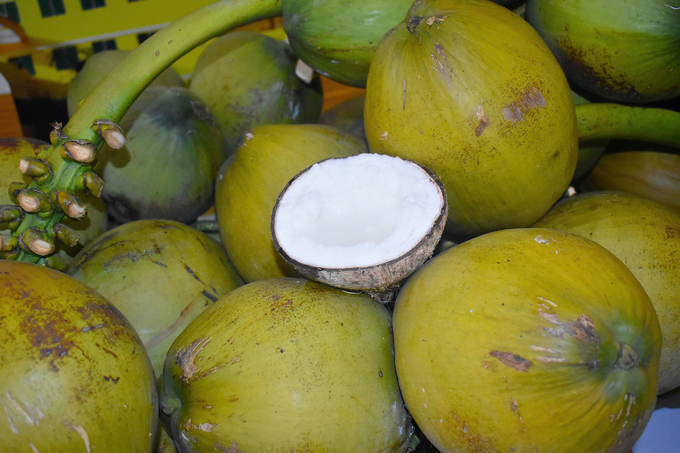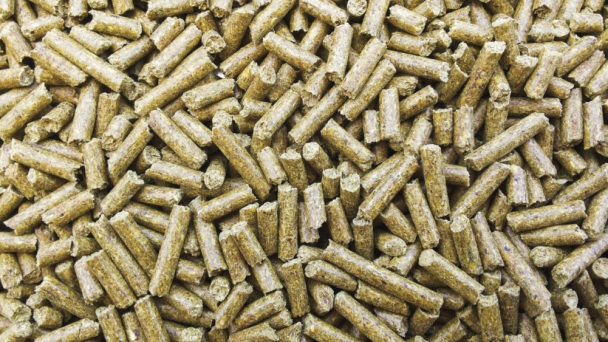December 15, 2024 | 21:42 GMT +7
December 15, 2024 | 21:42 GMT +7
Hotline: 0913.378.918
December 15, 2024 | 21:42 GMT +7
Hotline: 0913.378.918

Coconut exports open up many opportunities and challenges, clearly reflecting the development potential of this industry in major markets such as the US, Europe, China, etc. Photo: Minh Dam.
Mr. Nguyen Phong Phu, Technical Director of Vina T&T Group, stated at the forum "Connecting Coconut Production and Consumption" on December 13 that coconut exports present a variety of opportunities and challenges, showing the potential for growth in major markets such as the United States, Europe, and China. However, several hurdles must be overcome for Vietnam’s coconut industry to truly thrive in international markets.
With its substantial population and preference for natural products, China is a substantial consumer market for coconut-based processed products, coconut oil, coconut water, and raw coconuts.
This presents a significant advantage for Vietnamese enterprises, as the production unit and packaging facility codes are already in place and meet export standards for large quantities, as Mr. Phu emphasized.
In addition to the reduction of transportation costs, Vietnam's geographical proximity to China and the existence of free trade agreements between ASEAN and China further facilitate trade. Furthermore, Vietnam's success in exporting to challenging markets such as the United States, Australia, and Canada guarantees a consistent supply of coconuts from Ben Tre and other Mekong Delta provinces.
However, coconut exports encounter substantial obstacles. From phytosanitary measures and food safety to packaging and labeling requirements, countries are increasing the stringency of their import standards. This requires businesses to make investments to satisfy these more stringent requirements.

Mr. Nguyen Phong Phu, Technical Director of Vina T&T Group shared at the forum. Photo: Minh Dam.
Additionally, countries such as Thailand and Indonesia compete with coconut exports. Mr. Phu also observed that certain entities in China rent tiny, substandard facilities for packaging, which tarnishes the reputation of well-invested Vietnamese businesses. While logistical costs, particularly those associated with the preservation of fresh coconuts, continue to be a persistent challenge, fluctuating import policies and market demand present additional risks. Increased vulnerability to abrupt policy modifications from China is a consequence of an excessive dependence on the Chinese market.
To address these obstacles and capitalize on opportunities, businesses must prioritize the following: diversifying coconut-based products (e.g., coconut milk, coconut candy, and coconut-derived cosmetics), enhancing quality control, and expanding into new markets to decrease their reliance on China. Investment in marketing and the development of robust brand identities are also critical factors. To guarantee equitable competition, local authorities are encouraged to conduct a reevaluation of export packaging facilities following food safety standards and packaging codes. Furthermore, it is imperative to maintain transparency in the monitoring of exports by utilizing production unit and packaging facility codes to prevent misuse and guarantee proper compliance.
A pressing issue is the trading and misuse of production unit and packaging facility codes in the coconut and agricultural sectors. After getting codes, numerous organizations fail to utilize them as intended, instead opting to sell or lease them, which results in inaccurate information regarding the origins of the products. Some regions have been observed to engage in fraudulent procurement, where they procure coconuts from other regions but use mismatched production unit codes, thereby falsifying the origin information.

Dr. Phan Thi Thu Hien, Director of Post-Import Plant Quarantine Center 2, Plant Protection Department. Photo: Minh Dam.
Furthermore, certain production units fail to adhere to the registered production standards, which leads to violations of food safety and phytosanitary regulations. These infractions not only result in severe economic losses for farmers and legitimate businesses but also prompt importing countries, particularly China, to tighten controls or suspend imports from Vietnam. Additionally, they undermine national credibility.
The Vina T&T Group representative suggested that digital management systems be implemented to improve the supervision of production units and packaging facility codes in response to these challenges. Additionally, it is imperative to implement rigorous measures against fraudulent activities in order to safeguard the reputation of Vietnamese agricultural products and to raise awareness among farmers and businesses regarding their obligation to respect national branding.
Journalist Tran Cao, Deputy Editor-in-Chief of Vietnam Agriculture Newspaper, has stated that the trading of production unit and packaging facility codes must be addressed more aggressively and directly, as it is a "legal violation" with severe consequences on exports.
Dr. Phan Thi Thu Hien, Director of Post-Import Plant Quarantine Center 2 under the Department of Plant Protection, observed that the process of establishing a new agricultural product for export frequently necessitates extensive negotiations. For instance, it required a decade to export mangoes to the United States.
Dr. Hien emphasized that enterprises and producers must adhere to the conditions of importers and even surpass these standards to participate in the export chain. Policymakers and scientists are deeply concerned about the issue of production units and packaging facilities. Receiving a code is only the beginning; maintaining the reputation of individual companies, production units, and Vietnam's agricultural image is far more critical.
Dr. Hien cautioned that importers may impose additional barriers or even suspend imports in response to repeated violations by enterprises during the export process.
Translated by Linh Linh

(VAN) Ben Tre province is home to 133 coconut plantation codes, which span an area of more than 8,300 hectares. Additionally, 14 enterprises have been certified with packaging codes for the exports of fresh coconuts.

(VAN) Rice exports from other exporters like Pakistan are projected to decline by 12.3% year over year, according to estimates from S&P Global Commodity Insights analysts, due to India's re-entry into the market.

(VAN) EU cattle feed production is forecast to increase by 0.3% in 2024, reaching 42.2 million tonnes, FEFAC said.

(VAN) According to the Vietnam Association of Seafood Exporters and Producers (VASEP), shrimp exports in the first 11 months brought in nearly USD 3.6 billion, up 22% over the same period last year.

(VAN) From 3rd place, Vietnamese bananas surpassed the Philippines, accounting for nearly 41% of China's import market share, taking the lead after 10 years.

(VAN) Brazil is anticipating a bin-busting grain harvest in the 2024-25 marketing year, according to a report from the National Supply Company (Conab), released on Dec. 12.